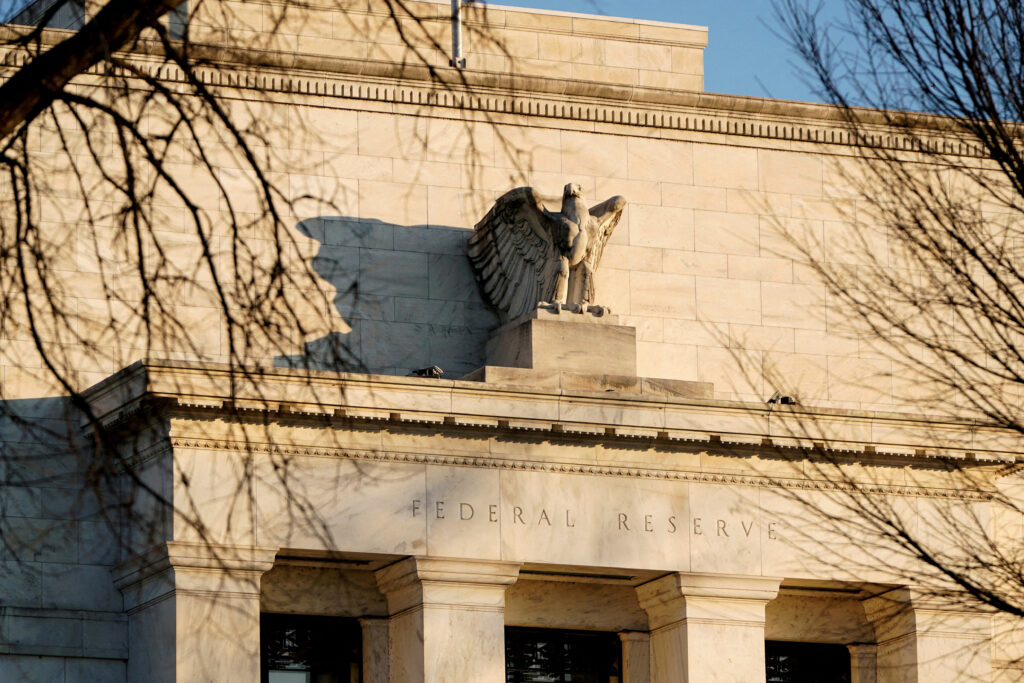WASHINGTON – The Federal Reserve’s big bang start on Wednesday to what’s expected to be more interest-rate cuts this year and next may have had the full support of only a slim majority of the central bank’s 19 policymakers, a look at their rate-path projections suggests.
That’s a closer call than the lone formal dissent, cast by Fed Governor Michelle Bowman, suggests. As many as nine of the Fed’s 19 policymakers may also have raised objections to some degree, or gone along only reluctantly, according to analysts who have parsed the decision over the 24 hours since.
A fuller readout of the meeting won’t be available for another three weeks, when the Fed will publish minutes of its September 17-18 meeting at which it cut the policy rate by a half-of-a-percentage point to 4.75%-5.00%.
Most analysts had expected just a quarter-point rate cut.
But already there were clues that this week’s decision was unlike the one at the Fed’s last meeting in July, where Fed Chair Jerome Powell said “all 19” participants supported holding the policy rate steady.
One hint came from Powell himself, in his post-meeting news conference.
“There was a lot of discussion back and forth, good diversity …excellent discussion today,” Powell said. “I think there was also broad support for the decision that the committee voted on.”
Another came from Bowman’s dissent, the first from a Fed governor in 19 years, after at least a year of speeches in which she made the case for keeping policy tight for longer.
But there were others.
Seven central bankers expect a year-end policy rate in the 4.5%-4.75% range, suggesting they anticipate only a single quarter-point rate cut at one of the Fed’s final two meetings of the year, according to a chart of the rate-path expectations of individual policymakers known as the “dot plot.”
Two indicated they see no change in the policy rate for the rest of the year.
Those projections could include some who readily agreed to start big, with the idea of then pausing. But analysts said it’s likely an indication that a number of policymakers – and not just Bowman – would have preferred something smaller this week.
The decision to deliver a more aggressive rate cut this time may open a path for the central bank to continue to cut farther and faster than many policymakers, at least at the moment, appear to support.
“The leadership appears to have pushed through a larger cut,” Goldman Sachs economists wrote, as they tore up a previous forecast for a slower set of rate cuts in favor of what they now see as a more likely outcome: consecutive quarter-point cuts at each of the Fed’s next six meetings, through June.
SGH Macro Advisors’ Tim Duy expects the Fed to need to deliver another half-point cut before the end of the year to cushion the economy, even as he argues that many policymakers today appear not to believe the jobs picture is weakening fast enough to have merited even a first half-point reduction.
Many “supported a 50-basis-point cut only reluctantly,” Duy said, pointing to the close split in the “dot plot” between the seven who expect just one more quarter-point cut this year, and the nine who see two more such cuts.
“Powell dragged almost everyone to the bigger cut, but it looks like the price he had to pay was a complacent take on the risks to the job market,” Duy said, noting that Powell did not talk up risks to the labor market during his news conference. The Fed in its policy statement said risks to its employment and inflation goals were ‘roughly in balance.’
Deutsche Bank economists also took note of the divide in the “dot plot” and Powell’s use of the word “broad” to describe internal support for the move.
All that, they said, “reinforces the view that it was a close decision.”
(Source: ReutersReuters)
Mark Glenn is a financial journalist and breaking news reporter for ABBO News. Mark is known for his ability to deliver real-time news updates on market developments, mergers and acquisitions, corporate earnings reports, and regulatory changes, helping investors stay informed and make sound financial decisions. Read Full Bio










